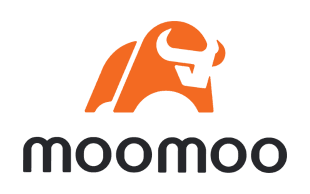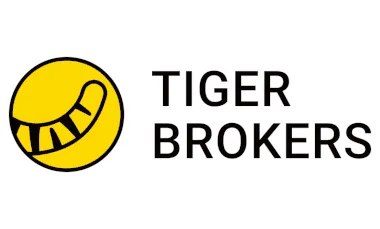Our top pick for
24/5 trading

Nvidia is a Californian-based technology company. Today, the company's largest revenue comes from graphics processing, but much of its market valuation is due to its dominant position in processors used for artificial intelligence (AI).
In June 2024, it became the most valuable public company in the world, overtaking Microsoft and Apple.
Nvidia shares are listed on the NASDAQ exchange, so to buy Nvidia stock from Australia you'll need to sign up to a share trading platform with access to US markets. You can compare your options in the table below or read on for information about Nvidia's financials, technical analysis and ESG rating.
Our top pick for
24/5 trading

Our top pick for
Copy trading

Our top pick for
Mobile app

NVIDIA's shares were split on a 10:1 basis on 9 June 2024. So if you had owned 1 share the day before the split, the next day you would own 10 shares. This wouldn't directly have changed the overall worth of your NVIDIA shares – just the quantity. However, indirectly, the new 90% lower share price could have impacted the market appetite for NVIDIA shares which in turn could have impacted NVIDIA's share price.
| 52-week range | US$75.5868 - US$153.1159 |
|---|---|
| 50-day moving average | US$125.4634 |
| 200-day moving average | US$127.6958 |
| Target price | US$171.0133 |
| PE ratio | 37.9014 |
| Dividend yield | US$0.034 (0.04%) |
| Earnings per share (TTM) | US$2.94 |
Use the fields above to explore the returns from a historical investment. Please refer to the charts further up this page to see performance over 5 years, or other periods. Past performance doesn't indicate future results. Capital is at risk.
Historical closes compared with the last close of $110.42
| 1 week (2025-03-27) | -0.91% |
|---|---|
| 1 month (2025-03-03) | -3.19% |
| 3 months (2025-01-03) | -23.57% |
| 6 months (2024-10-03) | -10.12% |
| 1 year (2024-04-03) | 24.12% |
|---|---|
| 2 years (2023-04-03) | 294.85% |
| 3 years (2022-04-01) | 313.37% |
| 5 years (2020-04-03) | 352.71% |
We currently don't have that product, but here are others to consider:
How we picked theseThe technical analysis gauge below displays real-time ratings for the timeframes you select. However, this is not a recommendation. It represents a technical analysis based on the most popular technical indicators: Moving Averages, Oscillators and Pivots. Finder might not concur and takes no responsibility.
Valuing NVIDIA stock is incredibly difficult, and any metric has to be viewed as part of a bigger picture of NVIDIA's overall performance. However, analysts commonly use some key metrics to help gauge the value of a stock.
NVIDIA's current share price divided by its per-share earnings (EPS) over a 12-month period gives a "trailing price/earnings ratio" of roughly 38x. In other words, NVIDIA shares trade at around 38x recent earnings.
That's relatively high compared to, say, the trailing 12-month P/E ratio for the NASDAQ 100 at the end of 2019 (27.29). The high P/E ratio could mean that investors are optimistic about the outlook for the shares or simply that they're over-valued.
NVIDIA's "price/earnings-to-growth ratio" can be calculated by dividing its P/E ratio by its growth – to give 1.0741. A low ratio can be interpreted as meaning the shares offer better value, while a higher ratio can be interpreted as meaning the shares offer worse value.
The PEG ratio provides a broader view than just the P/E ratio, as it gives more insight into NVIDIA's future profitability. By accounting for growth, it could also help you if you're comparing the share prices of multiple high-growth companies.
NVIDIA's EBITDA (earnings before interest, taxes, depreciation and amortisation) is US$83.3 billion (£65.8 billion).
The EBITDA is a measure of a NVIDIA's overall financial performance and is widely used to measure stock profitability.
Over the last 12 months, NVIDIA's shares have ranged in value from as little as US$75.5868 up to US$153.1159. A popular way to gauge a stock's volatility is its "beta".
Beta measures a share's volatility in relation to the market. The market (NASDAQ average) beta is 1, while NVIDIA's is 1.765. This would suggest that NVIDIA's shares are more volatile than the average for this exchange and represent, relatively speaking, a higher risk (but potentially also market-beating returns).
| Revenue TTM | US$130.5 billion |
|---|---|
| Operating margin TTM | 61.11% |
| Gross profit TTM | US$97.9 billion |
| Return on assets TTM | 57.42% |
| Return on equity TTM | 119.18% |
| Profit margin | 55.85% |
| Book value | 3.241 |
| Market capitalisation | US$2.8 trillion |
| EBITDA | US$83.3 billion |
TTM: trailing 12 months
Dividend payout ratio: 1.04% of net profits
Recently NVIDIA has paid out, on average, around 1.04% of net profits as dividends. That has enabled analysts to estimate a "forward annual dividend yield" of 0.04% of the current stock value. This means that over a year, based on recent payouts (which are sadly no guarantee of future payouts), NVIDIA shareholders could enjoy a 0.04% return on their shares, in the form of dividend payments. In NVIDIA's case, that would currently equate to about $0.034 per share.
While NVIDIA's payout ratio might seem low, this can signify that NVIDIA is investing more in its future growth.
NVIDIA's most recent dividend payout was on 1 April 2025. The latest dividend was paid out to all shareholders who bought their shares by 11 March 2025 (the "ex-dividend date").
Environmental, social and governance (known as ESG) criteria are a set of three factors used to measure the sustainability and social impact of companies like NVIDIA.
When it comes to ESG scores, lower is better, and lower scores are generally associated with lower risk for would-be investors.
Total ESG risk: 18.45
Socially conscious investors use ESG scores to screen how an investment aligns with their worldview, and NVIDIA's overall score of 18.45 (as at 12/31/2018) is excellent – landing it in it in the 12nd percentile of companies rated in the same sector.
ESG scores are increasingly used to estimate the level of risk a company like NVIDIA is exposed to within the areas of "environmental" (carbon footprint, resource use etc.), "social" (health and safety, human rights etc.), and "governance" (anti-corruption, tax transparency etc.).
Environmental score: 8.83/100
NVIDIA's environmental score of 8.83 puts it squarely in the 8th percentile of companies rated in the same sector. This could suggest that NVIDIA is a leader in its sector terms of its environmental impact, and exposed to a lower level of risk.
Social score: 9.65/100
NVIDIA's social score of 9.65 puts it squarely in the 8th percentile of companies rated in the same sector. This could suggest that NVIDIA is a leader in its sector when it comes to taking good care of its workforce and the communities it impacts.
Governance score: 11.46/100
NVIDIA's governance score puts it squarely in the 8th percentile of companies rated in the same sector. That could suggest that NVIDIA is a leader in its sector when it comes to responsible management and strategy, and exposed to a lower level of risk.
Controversy score: 2/5
ESG scores also evaluate any incidences of controversy that a company has been involved in. NVIDIA scored a 2 out of 5 for controversy – the second-highest score possible, reflecting that NVIDIA has, for the most part, managed to keep its nose clean.
NVIDIA Corporation was last rated for ESG on: 2019-01-01.
| Total ESG score | 18.45 |
|---|---|
| Total ESG percentile | 11.56 |
| Environmental score | 8.83 |
| Environmental score percentile | 8 |
| Social score | 9.65 |
| Social score percentile | 8 |
| Governance score | 11.46 |
| Governance score percentile | 8 |
| Level of controversy | 2 |
NVIDIA Corporation, a computing infrastructure company, provides graphics and compute and networking solutions in the United States, Singapore, Taiwan, China, Hong Kong, and internationally. The Compute & Networking segment comprises Data Center computing platforms and end-to-end networking platforms, including Quantum for InfiniBand and Spectrum for Ethernet; NVIDIA DRIVE automated-driving platform and automotive development agreements; Jetson robotics and other embedded platforms; NVIDIA AI Enterprise and other software; and DGX Cloud software and services. The Graphics segment offers GeForce GPUs for gaming and PCs, the GeForce NOW game streaming service and related infrastructure, and solutions for gaming platforms; Quadro/NVIDIA RTX GPUs for enterprise workstation graphics; virtual GPU or vGPU software for cloud-based visual and virtual computing; automotive platforms for infotainment systems; and Omniverse software for building and operating industrial AI and digital twin applications. It also customized agentic solutions designed in collaboration with NVIDIA to accelerate enterprise AI adoption. The company's products are used in gaming, professional visualization, data center, and automotive markets. It sells its products to original equipment manufacturers, original device manufacturers, system integrators and distributors, independent software vendors, cloud service providers, consumer internet companies, add-in board manufacturers, distributors, automotive manufacturers and tier-1 automotive suppliers, and other ecosystem participants. NVIDIA Corporation was incorporated in 1993 and is headquartered in Santa Clara, California.
It's easier than ever to buy US and other global OTC stocks from Australia.
We used Finder's proprietary algorithm to find the 10 best stocks under $10 on the ASX.
We used Finder's proprietary algorithm to find Australian-listed companies that have strong fundamentals and have a share price under $5.
Best performers included African Gold, Leeuwin Metals and European Metals Holdings.
Revolut now offers US stocks and crypto trades to Australian customers. Here are the pros and cons.
Top gainers included Gold Road Resources, Black Cat Syndicate and Ramelius Resources.
If you're thinking of trading stocks with Tiger Brokers, check out our review of this online broker's fees, safety and pros and cons first.
Here is the essential information you need to know about buying shares for children.
Giving shares to a loved one is a great idea, but how do you actually do it?
Whether you want an online broker or a full-service broker, this guide explains everything you need to know in order to find one to help you buy and sell shares.